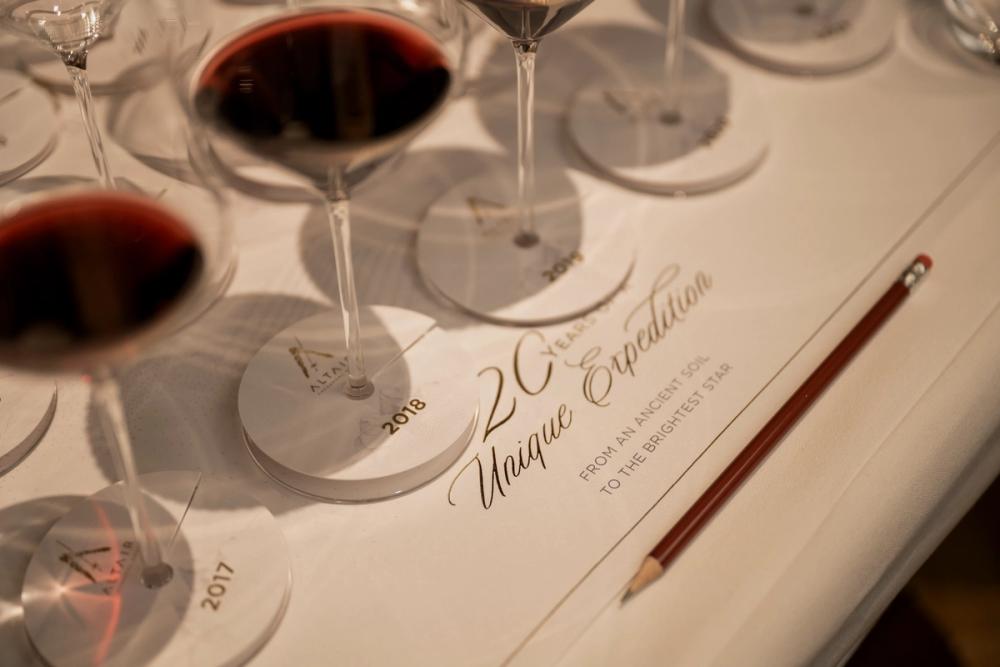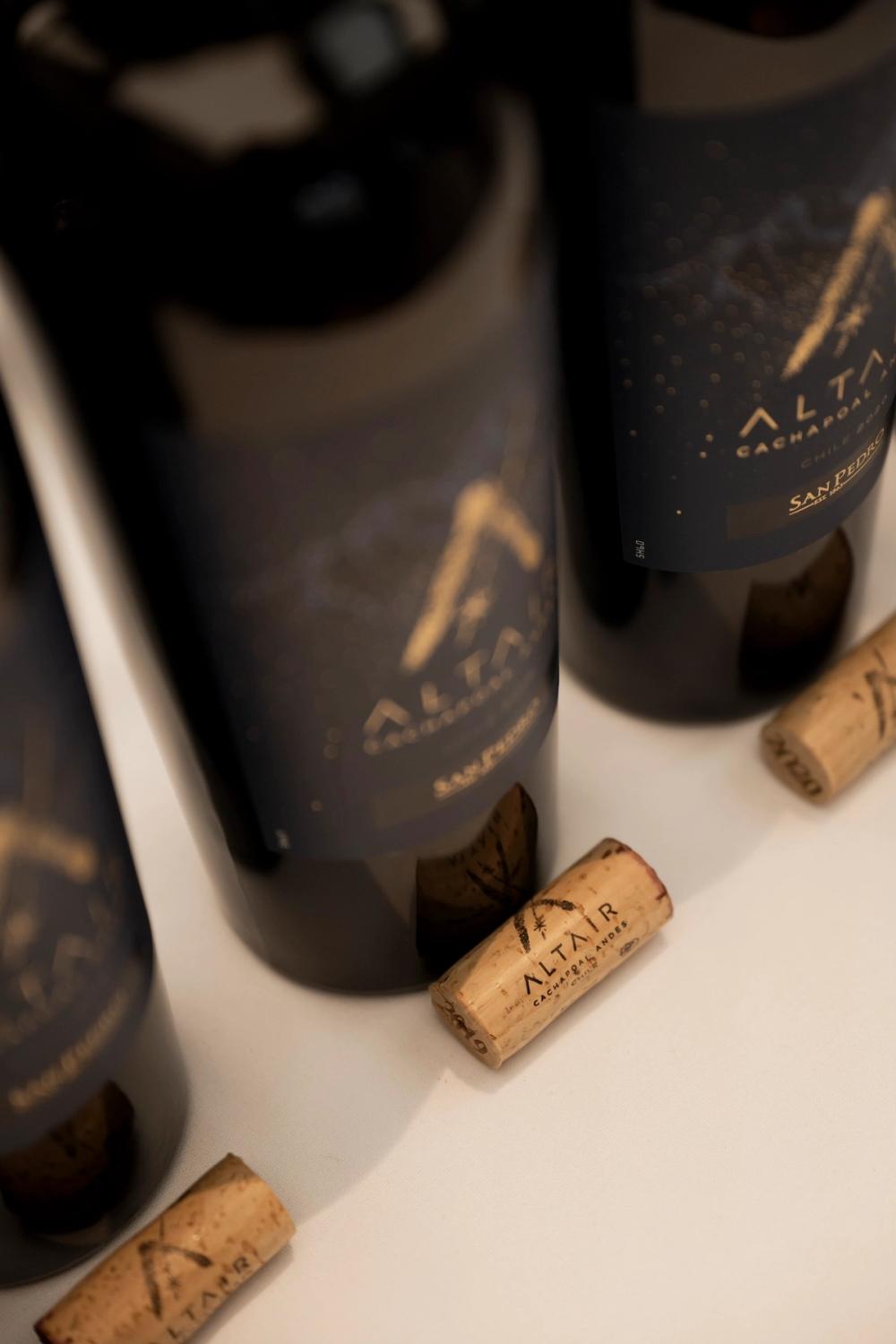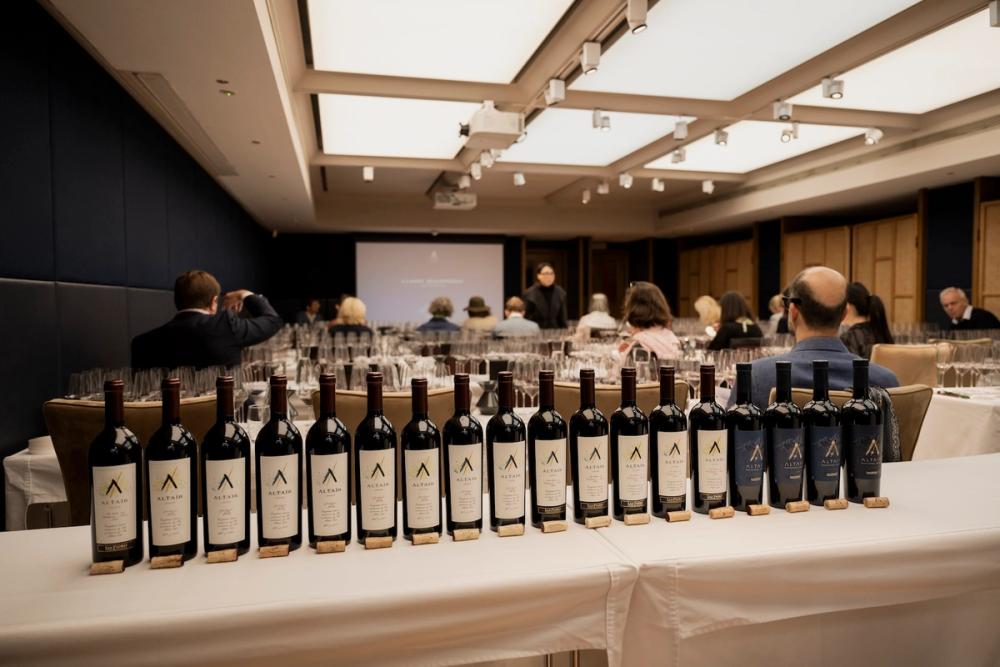It’s a rare pleasure to witness a special wine “grow up”, from its first steps of infancy to its 20th year. The story of young vines establishing themselves and coming to maturity; burgeoning knowledge and understanding of the terroir; and a growing confidence and empathy in the winemaking – all these elements, compressed into a couple of hours, were on offer at the recent vertical tasting of Chilean premium wine, Altair. And it was the first time such a tasting had been held outside Chile.
The tasting was jointly hosted by Gabriel Mustakis, head winemaker of Viña San Pedro’s fine wines, and Alistair Cooper, a Master of Wine specialised in Chile and who has spent many years in the country. San Pedro is one of the big four wine producers of Chile (along with Concha Y Toro, Santa Rita and Santa Carolina).
Why the name Altair? It is the brightest star in the constellation of Aquila and represents a pinnacle of achievement: quite a name to live up to for any fine wine at the beginning of its journey, let alone one initially made from very young vines.

The story of Altair, a Cabernet Sauvignon dominated blend, began with the 2002 vintage (the only one produced which we didn’t taste) and was, as with other prestige projects at the time, such as Seña and Almaviva, a joint venture. The partner in this case was Château Dassault in Saint Emilion.
The exact grape blend has ebbed and flowed over those 20 years, but has remained steadfastly Cabernet dominant, with Syrah, Carmenère and Cabernet Franc making regular contributions, plus a cameo appearance from Petit Verdot along the way.
The French influence in those early years (2002-2006) was very much in evidence and the model can be summarised as “high end wines in the French style”, as Gabriel Mustakis put it. There seemed to be an emphasis on following a standard recipe, with each edition in this period spending 15 months in new French oak barrels.
The young vines that provided the fruit for these wines, planted in 1998, plus that heavy-handed oak treatment combined to give all these wines a certain commonality. However, the 2005 vintage stands out among them, for its depth and concentration. Those young vines are, at seven years old, starting to take to the site and it feels like this wine still has a way to go, even at 19 years old.

2007 was something of a watershed year, with the ending of the joint venture with Château Dassault and a gradual move away from the 100% new oak recipe – though renowned oenologist Pascal Chatonnet was to remain as consultant winemaker until 2011. It also marked a deeper appreciation of the particular vineyard site, which is tucked into the foothills of the Andes in the Cachapoal Valley, and which, says Mustakis, generates “reactive tannins” in Cabernet Sauvignon.
This led to an understanding that there was no need to work on the vines to ensure that those tannins express themselves. For example, they made efforts to avoid any (water) stressing of the vines and aimed for lower levels of extraction from the grapes, via cold soaking and cool temperature fermentations. At the same time they alighted on a new ageing regime of 10 months in just 50% new and 50% used French oak barrels. 2007 also marks the arrival of Petit Verdot in the blend, which had been planted at the same time as the other varieties, but which had taken longer to provide the kind of quality grapes that then winemaker Ana Maria Cumsille had been looking for.
The wines in this era have a lighter touch and an elegance that was missing from those initial vintages. The pendulum had definitely swung in the direction of finesse and freshness.
The start of a new era

After 2012, a year when Altair was not made as fruit quality wasn’t good enough, 2013 marked the start of a new era for the project. In came a new winemaking team and the start of a soil mapping project: an effort to understand the origins of their soils and to match the development of the vines to the soil type. For example, this helped them to manage Carmenère better, by keeping vigour low, which makes for ripe fruit, but with good acidity.
The wines from the years 2013 to 2017 seem to be more relaxed yet confident, with gentler extraction. They strike a balance between the outwardly glossy, yet somehow rustic early years and those elegant, bordering on austere, years of 2007-2011. Even in the cool, wet year of 2016, where they were forced to pick early, the wine exhibits charming, sweet fruit, but also manages to deliver density and intensity.
The final tranche of wines we tasted were made by Mustakis himself and bring together a number of crucial influences: older vines, a deeper understanding of the site and of how to make the wine in a way that lets these factors express themselves naturally. As Mustakis puts it, they are proud of what they are doing now.
The 2018 is the current vintage on the UK market (which will move onto the 2020 in due course). As well as classic barrique-ageing, Mustakis has introduced foudres into the ageing regime for that year’s blend of 95% Cabernet Sauvignon, 2% Cabernet Franc, 2% Carmenère and 1% Syrah. This wine has overt freshness combined with rich and expressive fruit and textured tannins – they are not afraid to let those tannins show themselves, as long as they are ripe. The oak is beautifully integrated and lets the fruit shine.
The Altair 2020 sees the arrival of the almost inevitable amphorae into the cellar alongside the foudres and barriques and is a blend of 88% Cabernet Sauvignon, 8% Cabernet Franc and 4% Carmenère. The resulting wine is a harmonious combination of ripe fruit, with a velvety texture and good natural acidity, even in its current youthful state, which is quite charming.
We ended with a preview of the yet-to-be-released Altair 2021 which, fittingly, seems to bring all the elements from the previous 20 years together. It is a blend of 90% Cabernet Sauvignon and 10% Cabernet Franc, a variety which Mustakis believes has a bright future in Chile. It has marked freshness and a silky texture, with purity and focus. Though clearly right at the beginning of its evolution and with a long future ahead of it, this is not just a very impressive wine, but an incredibly drinkable one too.
In conclusion

This vertical tasting of Altair neatly mirrors the wider story of premium wines in Chile. From an initial formula imported from elsewhere, to a growing understanding and appreciation of the unique terroir of their Cachapoal vineyard, alongside vines which are reaching their full potential and, finally, a winemaking philosophy which demonstrates growing confidence and understanding. This kind of tasting can be exposing for the producer – openly showing the results of early experiments, moving towards wines with genuine interest, personality and a true sense of place. It was a real privilege to witness.
Altair wines are exclusive to the on-trade and available in the UK via Enotria & Coe which is a commercial partner of The Buyer. To discover more about them click here.
VSPT Wine Group is also a commercial partner of The Buyer. To discover more about them click here.
































